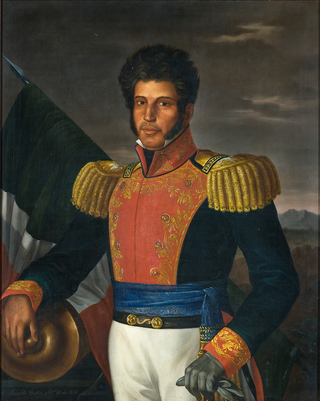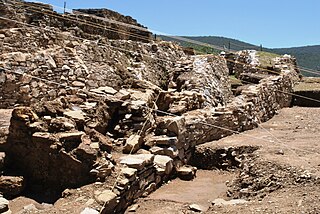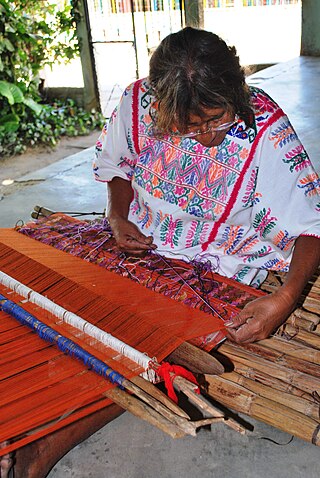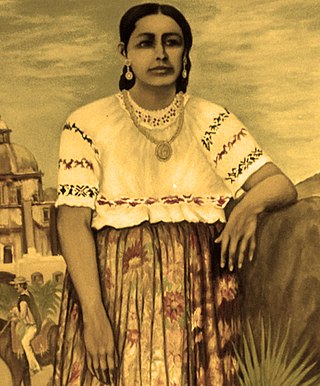
The Spanish colonization of the Americas began in 1493 on the Caribbean island of Hispaniola after the initial 1492 voyage of Genoese mariner Christopher Columbus under license from Queen Isabella I of Castile. These overseas territories of the Spanish Empire were under the jurisdiction of Crown of Castile until the last territory was lost in 1898. Spaniards saw the dense populations of indigenous peoples as an important economic resource and the territory claimed as potentially producing great wealth for individual Spaniards and the crown. Religion played an important role in the Spanish conquest and incorporation of indigenous peoples, bringing them into the Catholic Church peacefully or by force. The crown created civil and religious structures to administer the vast territory. Spanish men and women settled in greatest numbers where there were dense indigenous populations and the existence of valuable resources for extraction.

New Spain, officially the Viceroyalty of New Spain, originally the Kingdom of New Spain, was an integral territorial entity of the Spanish Empire, established by Habsburg Spain. It was one of several domains established during the Spanish conquest of the Americas, and had its capital in Mexico City. Its jurisdiction comprised a large area of the southern and western portions of North America, mainly what became Mexico and the Southwestern United States, but also California, Florida and Louisiana; Central America as Mexico, the Caribbean like Hispaniola and Martinica, and northern parts of South America, even Colombia; several Pacific archipelagos, including the Philippines and Guam. Additional Asian colonies included "Spanish Formosa", on the island of Taiwan.

Guerrero, officially the Free and Sovereign State of Guerrero, is one of the 32 states that compose the 32 Federal Entities of Mexico. It is divided into 81 municipalities. The state has a population of about 3.5 million people. It is located in southwest Mexico and is bordered by the states of Michoacán to the north and west, the State of Mexico and Morelos to the north, Puebla to the northeast and Oaxaca to the east. In addition to the capital city, Chilpancingo and the largest city Acapulco, other cities in Guerrero include Petatlán, Ciudad Altamirano, Taxco, Iguala, Ixtapa, and Zihuatanejo. Today, it is home to a number of indigenous communities, including the Nahuas, Mixtecs, Tlapanecs, Amuzgos, and formerly Cuitlatecs. It is also home to communities of Afro-Mexicans in the Costa Chica region.
Kʼicheʼ are Indigenous peoples of the Americas and are one of the Maya peoples. The eponymous Kʼicheʼ language is a Mesoamerican language in the Mayan language family. The highland Kʼicheʼ states in the pre-Columbian era are associated with the ancient Maya civilization, and reached the peak of their power and influence during the Mayan Postclassic period.

Vicente Ramón Guerrero Saldaña was a Mexican military officer from 1810-1821 and a statesman who became the nation's second president in 1829. He was one of the leading generals who fought against Spain during the Mexican War of Independence. According to historian Theodore G. Vincent, Vincente Guerrero lived alongside indigenous in Tlaltelulco and had the ability to speak Spanish and the languages of the Indigenous.

The Nahuas are a Uto-Nahuan ethnicity and one of the indigenous people of Mexico, with Nahua minorities also in El Salvador, Guatemala, Honduras, Nicaragua, and Costa Rica. They comprise the largest indigenous group in Mexico, as well as the largest population out of any North American Indigenous people group who are native speakers of their respective indigenous language. Amongst the Nahua, this is Nahuatl. When ranked amongst all Indigenous languages across the Americas, Nahuas list third after speakers of Guaraní and Quechua.

The encomienda was a Spanish labour system that rewarded conquerors with the labour of conquered non-Christian peoples. In theory, the conquerors provided the labourers with benefits, including military protection and education. In practice, the conquered were subject to conditions that closely resembled instances of forced labour and slavery. The encomienda was first established in Spain following the Christian Reconquista, and it was applied on a much larger scale during the Spanish colonization of the Americas and the Spanish East Indies. Conquered peoples were considered vassals of the Spanish monarch. The Crown awarded an encomienda as a grant to a particular individual. In the conquest era of the early sixteenth century, the grants were considered a monopoly on the labour of particular groups of indigenous peoples, held in perpetuity by the grant holder, called the encomendero; starting from the New Laws of 1542, the encomienda ended upon the death of the encomendero, and was replaced by the repartimiento.

Tixtla is a town and seat of the municipality of Tixtla de Guerrero in the Mexican state of Guerrero. The name is Nahuatl, and means either "maize dough" (masa) from textli; "our valley" from to ixtla; or "temple by the water" from teoixtlen'

The traditions of indigenous Mesoamerican literature extend back to the oldest-attested forms of early writing in the Mesoamerican region, which date from around the mid-1st millennium BCE. Many of the pre-Columbian cultures of Mesoamerica are known to have been literate societies, who produced a number of Mesoamerican writing systems of varying degrees of complexity and completeness. Mesoamerican writing systems arose independently from other writing systems in the world, and their development represents one of the very few such origins in the history of writing.

Ignacio Manuel Altamirano Basilio was a Mexican radical liberal writer, journalist, teacher and politician. He wrote Clemencia (1869), which is often considered to be the first modern Mexican novel.

The Portuguese were the first Europeans to establish a colonial presence in the Indonesian Archipelago. Their quest to dominate the source of the spices that sustained the lucrative spice trade in the early 16th century, along with missionary efforts by Catholic orders, saw the establishment of trading posts and forts, and left behind a Portuguese cultural element that remains in modern-day Indonesia.

Tixtla de Guerrero is a municipality in the Mexican state of Guerrero. The municipal seat lies at Tixtla de Guerrero. The municipality covers an area of 290 square kilometres (110 sq mi).

Mártir de Cuilapán is a municipality in the Mexican state of Guerrero. The municipal seat lies at Apango. The municipality covers an area of 499.8 km2.

Colonia Algarín is a very small working class residential neighborhood located south of the historic center of Mexico City. Its border to the north is Eje 3 Sur José Peón Contreras, to the south Viaducto Miguel Alemán, to the east San Antonio Abad Av. and to the west Eje Central Lázaro Cárdenas. Colonia Algarín is located between colonias Buenos Aires, Álamos (Viaducto), Obrera and Asturias. On the south border, alongside Viaducto Miguel Alemán, flows the Río de la Piedad. This river, just as in the case as many other rivers of the city, is encased in cement.

Ixcateopan is an archaeological site located in the town and municipality of Ixcateopan de Cuauhtémoc, 36 kilometers from Taxco, in the isolated and rugged mountains of the northern part of the Mexican state of Guerrero.

The handcrafts of Guerrero include a number of products which are mostly made by the indigenous communities of the Mexican state of Guerrero. Some, like pottery and basketry, have existed relatively intact since the pre Hispanic period, while others have gone through significant changes in technique and design since the colonial period. Today, much of the production is for sale in the state's major tourism centers, Acapulco, Zihuatanejo and Taxco, which has influence the crafts’ modern evolution. The most important craft traditions include amate bark painting, the lacquerware of Olinalá and nearby communities and the silverwork of Taxdo.

Son mexicano is a style of Mexican folk music and dance that encompasses various regional genres, all of which are called son. The term son mexicano literally translates to “the Mexican sound” in English. Mexican sones are often rooted in a mix of Spanish, African, and Indigenous musical elements.

Parián or Pantin, also Parián de Arroceros was an area adjacent to Intramuros at its east built to house Sangley (Chinese) merchants in Manila in the 16th and 17th centuries during the Spanish rule in the Philippines. The place gave its name to the gate connecting it to Intramuros, the Puerta del Parián.
The Cabildo Mayor del Pueblo Muisca is an organisation of indigenous people, in particular the Muisca. It was established in September 2002 in Bosa, Bogotá, Colombia. The organisation, member of National Indigenous Organization of Colombia (ONIC), focuses on defending the rights of the descendants of the Muisca, and the development of cultural and historical heritage, territory and health and the linguistics of the indigenous language, Muysccubun.

Antonia Nava de Catalán was a woman involved in the Mexican War of Independence. She accompanied her husband, a volunteer who rose to the rank of colonel, throughout the war. Three of her sons were killed in the struggle. She is remembered for her willingness to sacrifice her family and herself to achieve independence from Spain, and came to be known as "La Generala". She fought alongside Jose Maria Morales until her death.

















